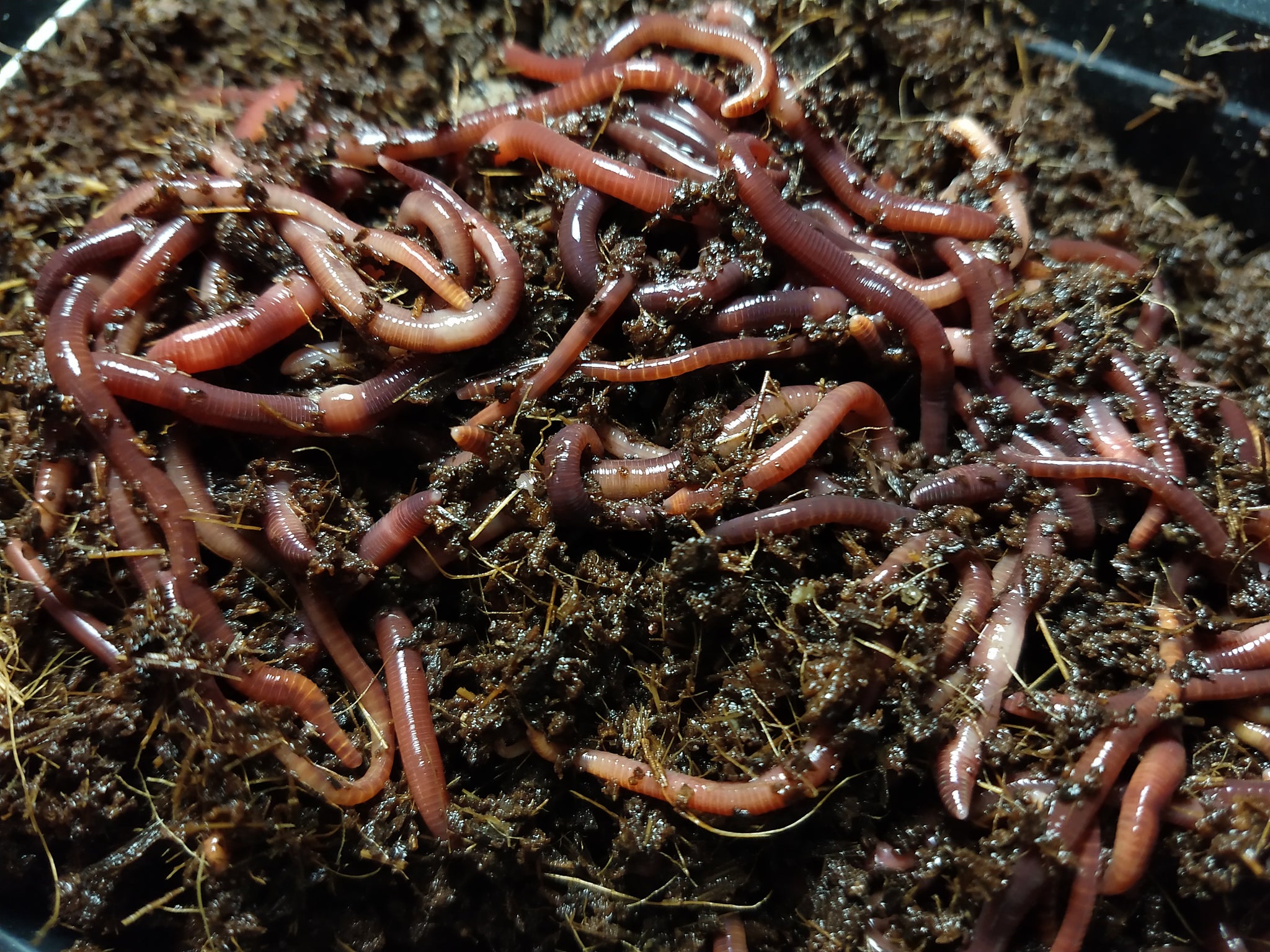Red Wigglers: The Unsung Heroes of Organic Waste Recycling
Red wigglers, or Eisenia fetida, act as important agents in the organic waste recycling process, changing thrown out products right into beneficial vermicompost. Their efficient break down of organic issue not just improves soil top quality however likewise adds to sustainable waste administration methods. As the world progressively seeks solutions to fight waste accumulation and improve farming efficiency, comprehending the function of these worms ends up being vital. What systems allow them to thrive in garden compost atmospheres, and how can they be effectively utilized in both household and industrial settings? Exploring these inquiries exposes the broader effects of vermicomposting in our eco-friendly landscape.
What Are Red Wigglers?
The exceptional resilience of red wigglers, clinically called Eisenia fetida, emphasizes their important duty in organic waste recycling. These tiny, reddish-brown earthworms are usually located in decaying organic issue, such as compost heap and manure stacks. Lake Hickory Bait. Unlike various other earthworm types, red wigglers prosper in nutrient-rich environments and are highly efficient at breaking down organic materials, making them essential for vermicomposting

(Lake Rhodhiss Bait)Along with their role in waste reduction, red wigglers add to dirt wellness by boosting dirt framework and oygenation through their burrowing activities (Lake Hickory Bait). Their existence in composting systems not only improves decay prices yet additionally advertises a sustainable approach to squander management, showing their importance in ecological conservation initiatives
Advantages of Composting With Worms
Composting with worms, especially red wigglers, provides many advantages that improve both waste administration and dirt health. First, these worms effectively break down organic waste, converting it into nutrient-rich vermicompost that improves dirt. This process accelerates decomposition, permitting a much faster recycling of cooking area scraps and other natural materials compared to traditional composting methods.
In addition, the vermicompost generated by red wigglers is including valuable microbes, which assist improve dirt framework, aeration, and moisture retention. This boosts the general health of plants, advertising energetic growth and increased returns in gardens and agricultural setups. Moreover, using worms in composting decreases the manufacturing of greenhouse gases, such as methane, contributing to an extra lasting waste management system.

Exactly How to Beginning Vermicomposting
Establishing a vermicomposting system is a simple process that can produce substantial advantages for both waste monitoring and dirt enrichment. To start, choose a suitable container, such as a plastic bin or wooden box, with appropriate air flow openings to make sure appropriate air movement. The measurements must ideally be about 2 feet by 3 feet, permitting enough room for the worms to grow.
Following, prepare bed linens product, which can contain shredded paper, cardboard, or coconut coir. This bed linen must be dampened to produce an appropriate habitat for the worms. Once the bedding remains in area, present red wigglers (Eisenia fetida) right into the bin, usually around one pound of worms for each square foot of surface area.
Complying with the placement of worms, include natural waste, such as fruit and vegetable scraps, coffee premises, and crushed eggshells. With these actions, you will successfully initiate a vermicomposting system that adds to sustainable waste management and improves your soil.
Maintaining a Healthy And Balanced Worm Container
(Red Wiggler Express)Maintaining click here for more info a worm bin prospering requires routine attention and treatment to ensure the health and wellness of the red wigglers and the efficiency of the composting process. Correct maintenance starts with keeping an eye on the dampness levels; the container ought to perspire but not soaked. An excellent guideline is to keep a consistency similar to a wrung-out sponge.
Delicately blending the bed linens and food scraps every few weeks avoids compaction and makes sure that all worms have accessibility to oxygen. In addition, it is vital to feed the worms appropriately.
If the bin comes to be also warm or chilly, the worms may become worried. By faithfully handling these elements, one can maintain a durable and effective worm bin.
Influence On Lasting Living
The effective maintenance of a worm bin not just profits the health of red wigglers but additionally contributes considerably to lasting living methods. By recycling natural waste, such as cooking area scraps and backyard particles, red wigglers help draw away significant amounts of material from landfills. This decrease in waste not only lowers greenhouse gas exhausts but additionally lessens the environmental worry connected with waste management.
In addition, the spreadings produced by red wigglers act as a nutrient-rich organic plant food, enhancing dirt health and advertising plant growth. This all-natural alternative to chemical plant foods supports lasting agriculture and gardening techniques, minimizing reliance on synthetic inputs that can damage environments. Additionally, worm composting promotes awareness of waste administration, urging individuals and neighborhoods to adopt more lasting habits.

Verdict
In recap, red wigglers work as essential factors to natural waste reusing via their reliable disintegration of organic materials. Their ability to generate nutrient-rich vermicompost enhances soil health and wellness and sustains sustainable farming techniques. By integrating vermicomposting into waste management strategies, people and communities can significantly reduce waste while advertising ecological sustainability. The function of Eisenia fetida in promoting healthy communities underscores the importance of these microorganisms in attaining lasting living and improving soil fertility.